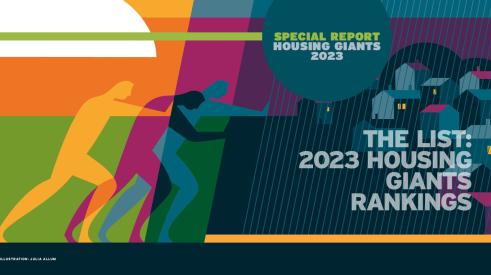There are just more than 5 million homes for sale in the United States, about the same number of housing units in Illinois. So to visualize the devastation across the country: imagine a "For Sale" sign in front of every single-family home, every townhouse, every condo, every multi-family residential building in the entire state.
It's a horrifying thought, but now imagine this: every single home in the greater Detroit metro area is sitting empty because everyone has moved away. The 2.08 million households in the Motor City, including areas such as Ann Arbor and Flint, equate in number to the 2.07 million vacant homes for sale across the United States, according to data from the U.S. Census Bureau and the National Association of Realtors.
The length and depth of this correction, say experts at Harvard University's Joint Center for Housing Studies, will depend on the course of employment growth, interest rates, as well as the speed with which builders pare down excess supply.
Builders are already chipping away on their end by offering deep discounts and price reductions on the homes they have already built, as well as by decreasing housing starts. By the end of 2006, housing starts had dropped to 1.8 million, which is the lowest they had been since before 2003. For 2007, housing starts fell to a seasonally adjusted annual rate of 1.19 million units, the slowest since March 1993's pace of 1.08 million units, reports the NAHB. Single-family production registered a 1.7 percent decline to a 963,000-unit rate. Starts will continue to decrease in most U.S. regions in 2008 and then begin upward by third quarter 2008 and first quarter 2009, according to NAHB.
"Builders are working their problems down," says James Haughey, chief economist for Reed Construction Data. He adds, however, that it takes more than slowing housing starts to reverse the downturn in the U.S. housing market. Dropped housing prices are another way in which builders are playing a part to change the downward spiral of the housing market.
Whether it's homes, oil or even Beanie Babies, prices rise on items when demand exceeds supply and prices fall when supply exceeds demand. Given the increase in housing starts of the last few years outpaced the demand, it's no wonder home prices are declining. NAR figures show the national median existing-home price for all housing types was $211,700 in September, down 4.2 percent from September 2006 when the median was $220,900.
The problem with the dropped prices, however, is that buyers are playing a waiting game. They are hoping if they buy later rather than sooner, prices will drop even further.
 |
Who the qualified buyers become will be up to the mortgage lenders, who are tightening their ropes in an attempt to do their share to correct the housing problem they helped create when they offered products such as interest-free loans and adjustable rate mortgages with no money down. Between the fourth quarter of 2005 and the fourth quarter of 2006, the share of troubled subprime loans jumped from 6.6 percent to 7.9 percent, according to Joint Center statistics.
Credit Suisse reports the amount of adjustable-rate subprime debt expected to reset by the end of 2007 and 2008 could be as much as $482 billion. Much of this will likely be either refinanced or paid off at the time of sale before the reset dates hit. For those owners who will not find relief this way, the mortgage lenders may need to come to their aid in 2008 by offering a temporary reprieve on resetting the interest rates when they come due.
Housing affordability will remain a problem in the coming years. In just one year, the number of households with housing cost burdens in excess of 30 percent of income climbed by 2.3 million, hitting a record 37.3 million in 2005, according to the Joint Center for Housing Studies "2007 State of the Nation's Housing report." Reversing this trend requires a combination of structural and public policy shifts, as well as an upswing in job growth.
On the following pages, this 2008 Housing Forecast will look at the impact several factors have had on the housing market and how they will improve — or will need to improve — going forward. We will examine mortgage-lending shifts, job growth, building materials and regional activity, as well as show how the cooperation of several entities are needed to see a brighter 2008.
|
|||||||||||||||||||||||||||||||||||||||||||||||||||||||||||||||||||||||||||||||||||||||||||||||||||||||||||||||||||||||||||||||||||||||||||||||||||||||||||||||||||||||||||||||||||||||||||||||||||||||||||||||||||||
Advertisement
Related Stories
Housing Giants
The 2024 Housing Giants Survey Is Now Open!
Complete the 2024 Housing Giants Survey to see if your company makes the cut in Pro Builder's rankings of the largest home building companies in the country
Housing Giants
Builder Rankings by Revenue: 2023 Housing Giants List
Pro Builder's annual Housing Giants rankings list provides a snapshot in time of builders’ perceived opportunities and challenges. These are the top 240 home builders in the nation, ranked by revenue
Housing Giants
Holding Back the Headwinds
Stormy market conditions strained the nation’s largest home builders in 2022, and they’re bracing for more uncertainty






